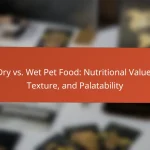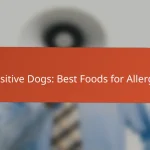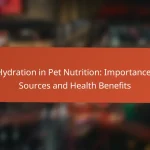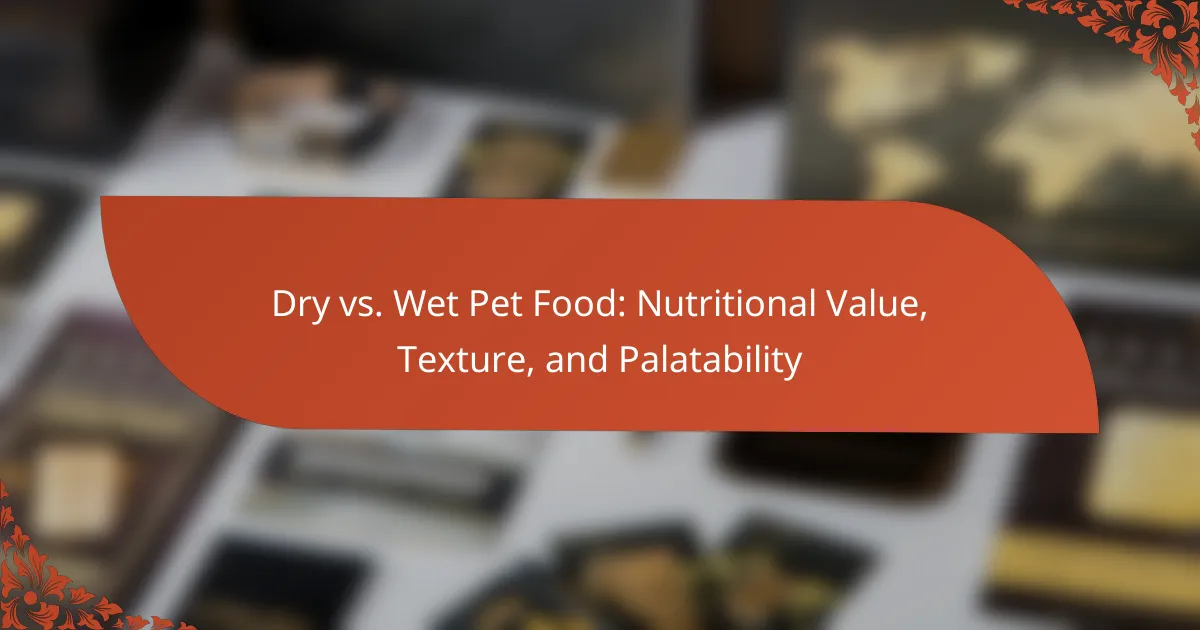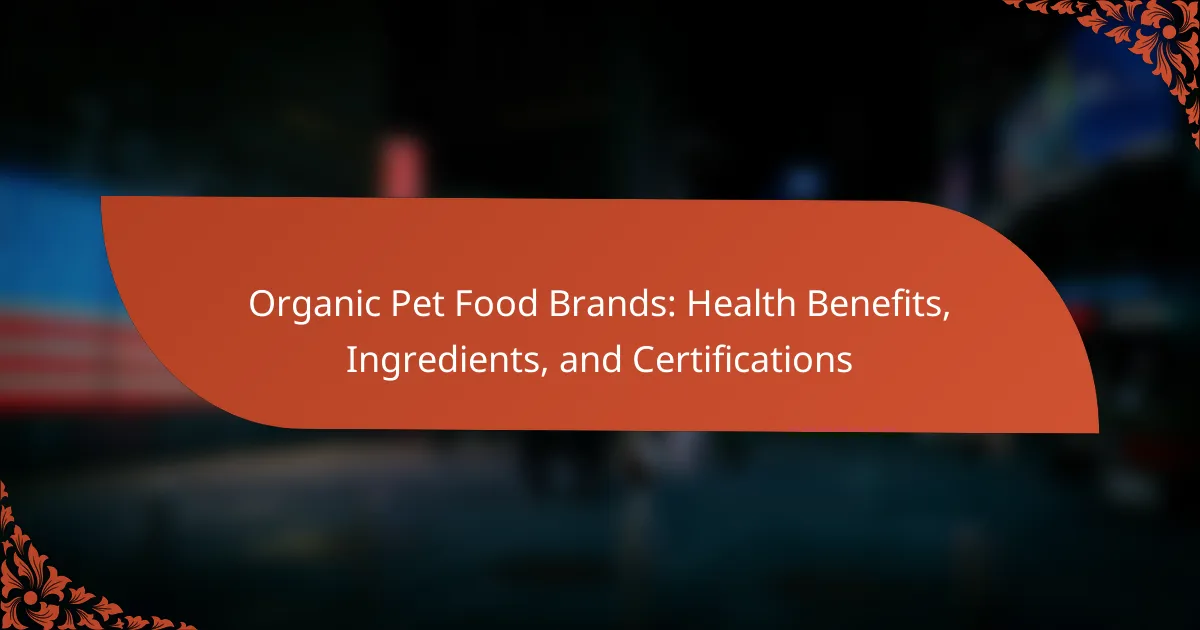Grain-free cat food is an effective solution for managing allergies in cats by focusing on high-quality proteins and limited ingredients that minimize allergens. By eliminating common grain-based triggers, these diets can alleviate allergy symptoms and enhance overall health. When choosing grain-free options, it is essential to avoid potential allergens and artificial additives to ensure your cat’s well-being.
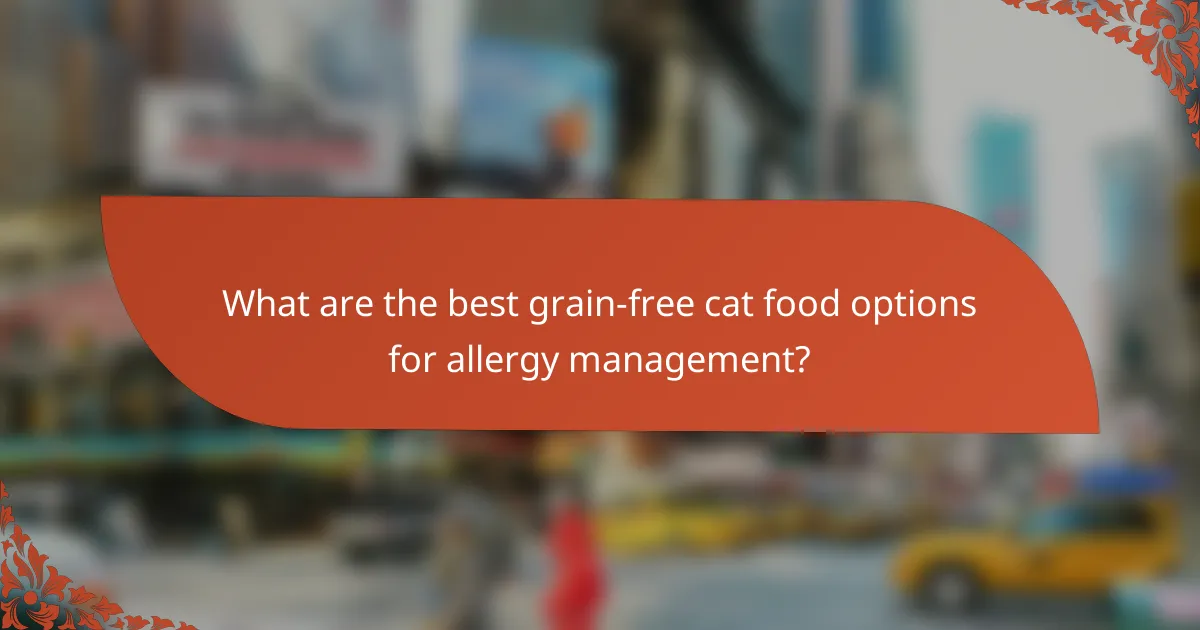
What are the best grain-free cat food options for allergy management?
The best grain-free cat food options for allergy management focus on high-quality proteins and limited ingredients to reduce allergens. These foods help minimize allergic reactions while providing essential nutrients for your cat’s health.
Wellness CORE Grain-Free
Wellness CORE Grain-Free cat food is formulated with a high protein content, primarily from real meat sources like turkey and chicken. This formula avoids grains, which can trigger allergies, and instead includes nutrient-rich ingredients like peas and potatoes.
When selecting Wellness CORE, consider your cat’s specific dietary needs. The food is available in both dry and wet varieties, allowing you to choose based on your cat’s preferences.
Blue Buffalo Wilderness Grain-Free
Blue Buffalo Wilderness Grain-Free cat food features real meat as the first ingredient, ensuring a protein-rich diet. This brand is known for its commitment to natural ingredients, avoiding grains and fillers that may cause allergic reactions.
This food also includes LifeSource Bits, a blend of antioxidants, vitamins, and minerals designed to support immune health. Look for options that suit your cat’s life stage, as they offer formulations for kittens, adults, and seniors.
Canidae PURE Limited Ingredient
Canidae PURE Limited Ingredient cat food is ideal for cats with sensitivities, featuring a simple recipe with just a few key ingredients. This grain-free option includes high-quality proteins like lamb or salmon and is free from common allergens.
Its limited ingredient approach helps reduce the risk of allergic reactions while still providing balanced nutrition. Consider this option if your cat has specific dietary restrictions or sensitivities.
Instinct Raw Boost Mixers
Instinct Raw Boost Mixers are a unique grain-free option that combines freeze-dried raw pieces with kibble. This food is designed to enhance your cat’s diet with raw nutrition while maintaining convenience.
These mixers can be added to your cat’s regular food to boost protein intake and provide essential nutrients. They are particularly beneficial for cats that may be picky eaters or require additional hydration.
Natural Balance L.I.D. Grain-Free
Natural Balance L.I.D. (Limited Ingredient Diet) Grain-Free cat food is formulated with a single animal protein source and limited carbohydrates, making it suitable for allergy management. This approach helps minimize the risk of food allergies while ensuring balanced nutrition.
When choosing this brand, pay attention to the specific protein source, such as duck or fish, to match your cat’s preferences and dietary needs. This food is available in both dry and wet forms, providing flexibility in your feeding routine.

How does grain-free cat food help with allergies?
Grain-free cat food can alleviate allergies by eliminating common allergens found in grains, which may trigger adverse reactions in sensitive cats. By focusing on alternative protein sources and carbohydrates, these diets can reduce allergy symptoms and improve overall health.
Reduces allergenic ingredients
Grain-free cat food typically avoids wheat, corn, and soy, which are known to cause allergies in some cats. Instead, these diets often include ingredients like peas, lentils, or potatoes, which are less likely to provoke allergic reactions. When selecting a grain-free option, check the ingredient list for potential allergens specific to your cat.
It’s beneficial to consult with a veterinarian to identify specific allergens affecting your cat. They may recommend an elimination diet to pinpoint which ingredients should be avoided.
Improves digestive health
Grain-free diets can enhance digestive health by providing easily digestible proteins and fewer carbohydrates. Many cats thrive on high-protein diets that promote better nutrient absorption and reduce gastrointestinal discomfort. Ingredients like sweet potatoes and pumpkin can also aid digestion by providing fiber.
Monitor your cat’s stool consistency and overall digestive behavior when transitioning to a grain-free diet. Gradual changes can help prevent digestive upset.
Supports skin and coat condition
By reducing allergens and incorporating high-quality proteins, grain-free cat food can lead to healthier skin and a shinier coat. Essential fatty acids, often found in fish or flaxseed oil, are commonly included in these diets to support skin health. A well-nourished coat reflects a cat’s overall well-being.
Look for grain-free options that list omega-3 and omega-6 fatty acids among their ingredients. Regular grooming and a balanced diet can further enhance your cat’s skin and coat condition.

What ingredients should be avoided in grain-free cat food?
When selecting grain-free cat food, it’s crucial to avoid certain ingredients that may trigger allergies or sensitivities in cats. Common allergens, artificial additives, and gluten sources can negatively impact your cat’s health and well-being.
Common allergens like chicken
Chicken is a frequent ingredient in many cat foods, including grain-free options, but it can be a common allergen for some cats. If your cat shows signs of allergies, such as itching or gastrointestinal issues, consider switching to protein sources like fish or lamb. Always monitor your cat’s reaction to new foods to identify potential allergens.
Artificial additives and fillers
Many grain-free cat foods contain artificial additives and fillers that can be harmful to your cat’s health. Ingredients like artificial colors, flavors, and preservatives should be avoided, as they can lead to digestive issues or allergic reactions. Look for foods that list whole, natural ingredients and avoid those with long ingredient lists filled with unrecognizable substances.
Grains and gluten sources
While grain-free cat food is designed to exclude grains, it’s essential to be aware of gluten sources that may still be present. Some cats may react negatively to gluten, even if it comes from non-grain sources like certain legumes. Always check the ingredient label for any mention of gluten-containing ingredients, and consult your veterinarian if you suspect gluten sensitivity in your cat.

What are the benefits of grain-free cat food?
Grain-free cat food offers several advantages, particularly for cats with food sensitivities or allergies. By eliminating grains, these diets can enhance nutrient absorption, support weight management, and improve overall energy levels.
Enhanced nutrient absorption
Grain-free cat food often contains higher levels of protein and essential nutrients, which can lead to better nutrient absorption. Cats are obligate carnivores, meaning their digestive systems are optimized for protein rather than carbohydrates found in grains.
When choosing grain-free options, look for foods rich in animal-based proteins and healthy fats. This can help ensure your cat receives the necessary nutrients for optimal health.
Weight management support
Grain-free diets can assist in weight management by providing higher protein content and lower carbohydrate levels. This combination helps maintain lean muscle mass while promoting a healthy weight.
For cats prone to obesity, consider grain-free foods that are specifically formulated for weight control. These options often include added fiber to promote satiety and reduce overeating.
Improved energy levels
By focusing on protein-rich ingredients, grain-free cat food can lead to improved energy levels in cats. A diet that supports stable blood sugar levels helps prevent energy crashes throughout the day.
Monitor your cat’s activity levels after switching to a grain-free diet. Many owners report increased playfulness and vitality, which can enhance the overall quality of life for their pets.

How to choose the right grain-free cat food?
Choosing the right grain-free cat food involves evaluating ingredient quality, understanding your cat’s specific dietary needs, and consulting with a veterinarian. Prioritize high-quality protein sources and ensure the food meets your cat’s nutritional requirements while avoiding allergens.
Assessing ingredient quality
Ingredient quality is crucial when selecting grain-free cat food. Look for products that list high-quality animal proteins, such as chicken or fish, as the first ingredient. Avoid foods with fillers or artificial additives, which can be harmful to your cat’s health.
Check for the presence of whole foods, such as fruits and vegetables, which provide essential vitamins and minerals. A good grain-free cat food should have a balanced nutrient profile, including healthy fats and fiber sources to support digestion.
Understanding your cat’s specific needs
Each cat has unique dietary requirements based on factors like age, weight, activity level, and health conditions. For instance, kittens require more protein and calories than adult cats, while senior cats may benefit from lower calorie options to manage weight.
Consider any known allergies or sensitivities your cat may have. If your cat has a history of food allergies, look for grain-free options that are specifically formulated for sensitive stomachs or include novel protein sources.
Consulting with a veterinarian
Consulting with a veterinarian is essential when choosing grain-free cat food. They can provide personalized recommendations based on your cat’s health history and nutritional needs. A vet can also help identify any potential allergens and suggest appropriate food options.
Regular check-ups can help monitor your cat’s response to the new diet. If you notice any adverse reactions, such as digestive issues or skin irritations, revisit your vet for further guidance on adjustments or alternative food choices.

What are the potential risks of grain-free diets?
Grain-free diets can pose several risks for cats, particularly in terms of nutritional balance and health issues. While these diets may help manage allergies, they can lead to deficiencies if not properly formulated.
Nutritional imbalances
Nutritional imbalances are a significant concern with grain-free cat foods. Many grain-free options replace grains with alternative carbohydrates, which may not provide the essential nutrients that cats require. Key nutrients like fiber, vitamins, and minerals can be lacking, leading to potential health issues.
For example, some grain-free diets rely heavily on peas or potatoes, which may not offer the same nutritional profile as traditional grains. It’s crucial to ensure that any grain-free diet is well-balanced and meets the nutritional standards set by organizations like the Association of American Feed Control Officials (AAFCO).
To avoid nutritional imbalances, consult with a veterinarian before switching to a grain-free diet. They can recommend specific brands or formulations that meet your cat’s dietary needs while minimizing the risk of deficiencies.
